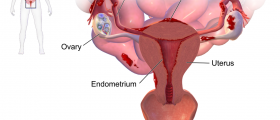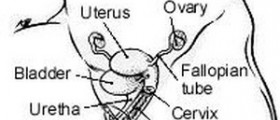What Is Endometriosis?
Endometriosis is a medical condition in which cells that are normally found in the uterus (to be more precise endometrial cells lining the uterus) spread and start growing in surrounding organs and structures such as ovaries, fallopian tubes, bladder, rectum and the peritoneum. The spread and growth of these cells to other organs is always accompanied by pain in the pelvic area, irregular bleeding and may cause serious complications. Infertility is one possible complication of untreated and neglected endometriosis.
Clinical Characteristics of Endometriosis
The leading symptom of endometriosis is pelvic pain. The pain is generally associated with menstrual period. It can be simply unbearable and may even increase with time. Furthermore, the pain caused by endometriosis may occur during intercourse, with bowel movements and/or urination. Excessive bleeding is another characteristic of endometriosis. There are two possibilities, menorrhagia (heavy period) or menometrorrhagia (bleeding between periods). Additional symptoms and signs of the condition include fatigue, diarrhea, constipation, bloating and nausea. Most of them usually occur during menstrual periods. One of the most serious signs as well as complications of endometriosis is infertility.
Connection between Endometriosis and Infertility
There is a connection between endometriosis and infertility. There are several explanations why women suffering from endometriosis may have difficulty getting pregnant. Firstly, the uterine cells spread to different organs and may form small cyst which eventually transform into scars. Scarring of fallopian tubes, for example, does not allow the egg to reach the uterus. Furthermore, such women usually suffer from hormonal imbalance which is another potential cause of infertility. Endometriosis may interfere with production of hormones in charge with ovulation, fertilization and implantation.
Diagnosis and Treatment for Endometriosis
Apart from gynecological examination and ultrasound of the pelvic area the doctor needs to perform laparoscopy and take samples of the tissue that affects different organs of the pelvis. Definitive conformation is achieved after pathohistological examination of tissue samples taken during laparoscopy. Laparoscopy is also an excellent method to asses the extent of the condition and to determine how many organs are actually affected by endometriosis.
Treatment for endometriosis depends on the severity of the condition and whether the woman is trying to conceive. All women are in the beginning treated conservatively and surgery is left only as the last resort.
Painful menstrual cramps are brought under control with several over-the-counter medications. Some women with severe pain may benefit from supplemental hormones. Hormonal therapy for endometriosis includes hormonal contraceptives, gonadotropin-releasing hormone agonists and antagonists, danazol, Medroxyprogesterone or aromataze inhibitors.
In case the woman is trying to conceive she may be suggested a surgery. The surgery will remove endometrial implants and increase the chances of pregnancy. These women also benefit from assisted reproductive technologies particularly if conservative surgery is ineffective. Severe cases of endometriosis are treated with hysterectomy, complete removal of the uterus, ovaries and fallopian tubes.
















Your thoughts on this
Loading...